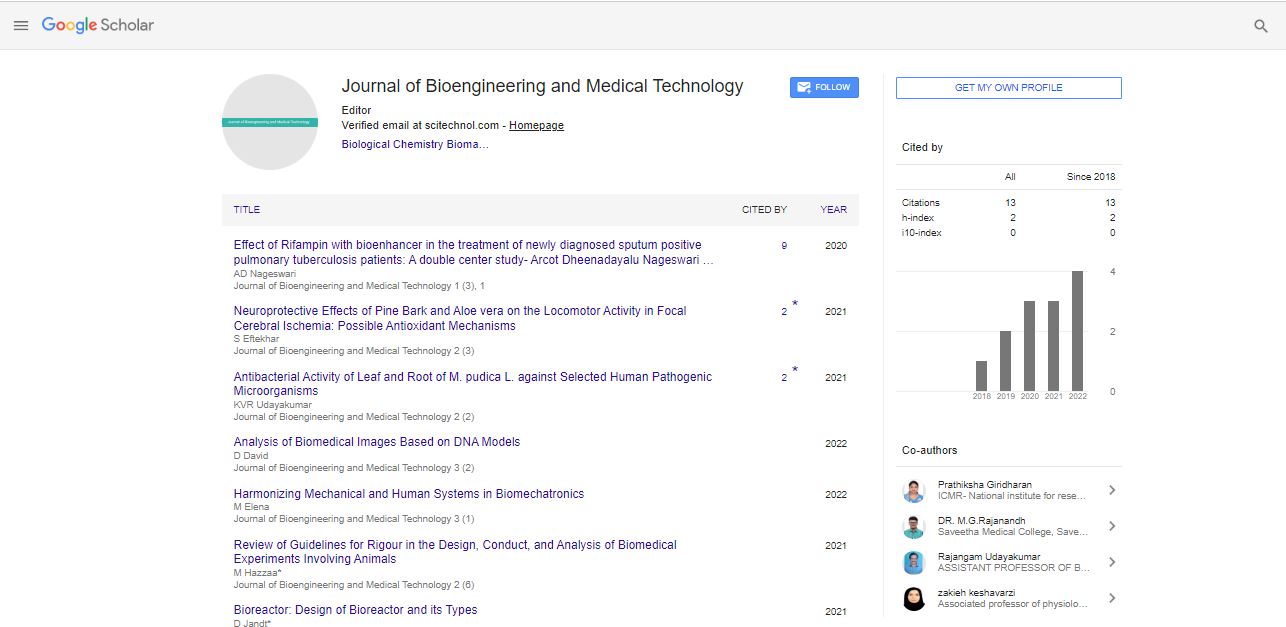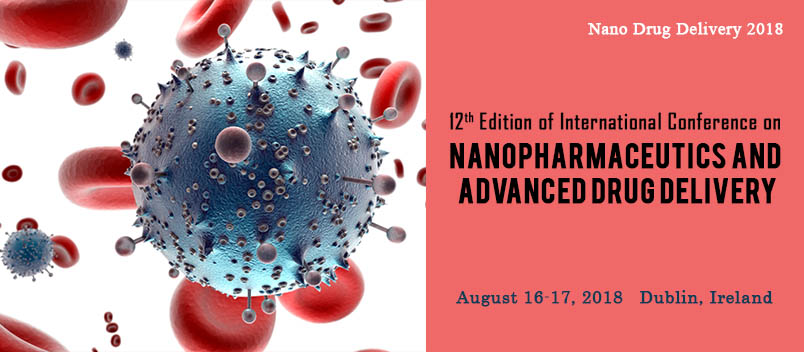Perspective, J Bioeng Med Technol Vol: 4 Issue: 2
Medical Regenerative Techniques and Tissue Engineering
YU Peng*
Department of Bioengineering, College of Shipbuilding Engineering, Harbin Engineering University, Harbin, 150001, China
*Corresponding Author: YU Peng
Department of Bioengineering, College of
Shipbuilding Engineering, Harbin Engineering University, Harbin, 150001, China,
Tel: 5697964164;
E-mail: peng@yu.edu.cn
Received date: 15 February, 2023, Manuscript No. JBMT-23-89415;
Editor assigned date: 17 February, 2023, PreQC No. JBMT-23-89415 (PQ);
Reviewed date: 03 March, 2023, QC No. JBMT-23-89415;
Revised date: 20 April, 2023, Manuscript No. JBMT-23-89415 (R);
Published date: 27 April, 2023, DOI: 10.4172/JBMT.1000073
Citation: Peng Y (2023) Medical Regenerative Techniques and Tissue Engineering. J Bioeng Med Technol 4:2.
Introduction
By assembling useful constructions, damaged tissues or entire organs can be repaired, preserved, or improved. The FDA has approved several synthetic tissues, such as artificial skin and cartilage, but their application to human patients is currently limited. Many times, creating organs in the lab is how tissue engineering techniques are described. These techniques involve the seeding of differentiated cells or stem cells onto a biomaterial scaffold, which is then given time to grow in a bioreactor before being implanted in a living organism [1]. The four fundamental types of tissue are connective, epithelial, muscular, and nervous. Other tissues are supported by and bound together by connective tissue (bone, blood, and lymph tissues). Providing a covering is epithelial tissue (skin, the linings of the various passages inside the body [2].
Examples are skin, cartilage, bone, heart valves, and bladder are just a few examples of tissue engineering that are currently used in therapeutic settings. There are numerous further examples, including artificial liver, pancreas, and blood arteries, which are currently in the research and animal trial stages [3].
The body's tissues may be repaired by stem cells, which can differentiate into a wide variety of cells. The study of different diseases, including cancer and heart disease, is made possible by the area of tissue engineering. Creating functioning tissues by fusing scaffolds, cells, and physiologically active chemicals is known as tissue engineering. It is a practice that emerged from the creation of biomaterials. Tissue engineering aims to put together functional constructions that repair, preserve, or enhance damaged tissues or entire organs [4].
Research into self-healing, in which the body employs its own mechanisms, occasionally with assistance from foreign biological material, to reproduce cells and reconstruct tissues and organs, is also included in the vast topic of regenerative medicine. The terms "tissue engineering" and "regenerative medicine" are sometimes used interchangeably as the field works to focus on cures rather than treatments for challenging, frequently chronic diseases.
Description
Application of tissue engineering
Implantation of human liver in mice: The modified human liver can be implanted into mice to create pharmacological interactions that are similar to those that occur in the human body. The researchers can quickly comprehend the toxicity test and species specific reactions.
Regeneration of a new kidney: Organ tissue created the kidney scaffolds that were seeded with endothelial and epithelial cells. Rats with the tissue both in vitro and in vivo generated urine.
Regenerating a fresh kidney represents a significant advancement in the fight against the shortage of organ donors.
Techniques
Stem cell treatments: Regenerative therapies like stem cell therapy use a unique kind of cell to treat wounds. Back pain is treated using stem cell therapy, which also aids in the regeneration of spinal disc tissues. In the body, stem cells are unique cells that can differentiate into other types of cells that perform specific functions.
Cartilage regeneration: Cartilage regeneration is one form of regenerative medicine that can benefit persons with musculoskeletal disorders. Since cartilage lacks blood arteries and is not always supplied with blood, it does not repair well on its own.
Prolotherapy: Prolotherapy is a form of regenerative medicine that repairs damaged connective tissues and joints. Degenerative disc disease, whiplash, and arthritis are all frequently treated with it. It can be applied to the hands, knees, hips, shoulders, back, and neck. In prolotherapy, a medical professional injects a watery solution into the damaged area that contains ingredients like saline and dextrose. A numbing substance like lidocaine is typically used in these injections as well.
Conclusion
However, these tissues have a lot of potential for research, particularly in the area of medication development. Utilizing active human tissue to screen drug candidates could expedite development, give crucial tools for facilitating tailored care, save money, and lessen the need for animal testing.
References
- Van Norman GA (2019) Limitations of animal studies for predicting toxicity in clinical trials: Is it time to rethink our current approach? JACC Basic to Transl Sci 4:845-854.
[Crossref] [Google Scholar] [PubMed]
- Shuler ML (2017) Organ, body and disease on a chip systems. Lab Chip 17:2345-2346.
[Crossref] [Google Scholar] [PubMed]
- Zuang V, Dura A, Worth A, David AB, Sofia BL, et al. (2021) Non-animal methods in science and regulation. EURL ECVAM status report. European Commission, JRC Publications Repository.
- Homayun B, Lin X, Choi HJ (2019) Challenges and recent progress in oral drug delivery systems for biopharmaceuticals. Pharmaceutics 11:129.
[Crossref] [Google Scholar] [PubMed]
 Spanish
Spanish  Chinese
Chinese  Russian
Russian  German
German  French
French  Japanese
Japanese  Portuguese
Portuguese  Hindi
Hindi 
